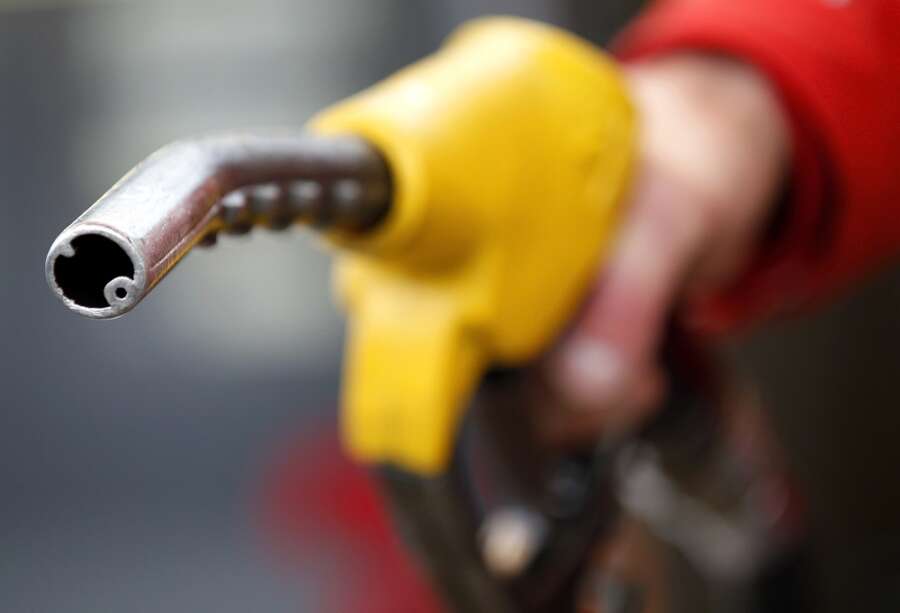
The cost of living is spiralling out of control with the price of fuel, energy, and food all rising at an alarming rate. This is seeing some families having to choose between heating their homes, putting food on the table, and filling up their cars.
Since the small fuel duty cut in March, nothing more has been done to support motorists with the cost of petrol and diesel. Current speculation that the government is considering a fuel duty cut in the autumn budget is welcome news, but many are calling for action now. With several European nations significantly cutting fuel duty to provide much needed support to consumers, isn’t it time the UK did so too.
With the UK government benefiting from rising VAT receipts on fuel as prices soar, and speculation that the government may be considering a further reduction in fuel duty, KIS Finance looks at what would be the impact of a further 10p reduction in duty on a litre of fuel.
How the government in benefiting from rising fuel costs
Although fuel duty has been cut, VAT remains unchanged and is still charged at a rate of 20%.
With prices going up, this means that the amount of VAT the government earns on each litre of fuel is also increasing.
As fuel prices soar the cost of filling up is now substantially more than it was before the fuel duty cut in March, making the 5% reduction somewhat obsolete.
The cost of fuel now means that filling up an average family car costs more than £100. This has resulted in calls to government from both industry and consumers to do something more regarding fuel duty.
VAT: How much tax the Government makes on petrol and diesel
Here is a comparison, over the last five years, of how much the government has made in VAT per litre of petrol and diesel sold.
June 2022
Petrol – 191.05p per litre – 31.84p VAT per litre
Diesel – 198.94p per litre – 33.16p VAT per litre
June 2021
Petrol – 129.52p per litre – 21.59p VAT per litre
Diesel – 131.79p per litre – 21.96p VAT per litre
June 2020
Petrol – 107.11p per litre – 17.85p VAT per litre
Diesel – 112.07p per litre – 18.68p VAT per litre
June 2019
Petrol – 130.67p per litre – 21.78p VAT per litre
Diesel – 135.51p per litre – 22.58p VAT per litre
June 2018
Petrol – 129.37p per litre – 21.56p VAT per litre
Diesel – 132.31p per litre – 22.05p VAT per litre
*Data from RAC’s fuel watch
How much tax do consumers currently pay on a litre of fuel (fuel duty plus VAT)
In an interim budget in March 2022, the government announced a fuel duty cut of 5p per litre. This brought the rate of 57.95p per litre (frozen since 2011) down to 52.95p per litre in a bid to ease the pressure on motorists amid rising costs.
However VAT, set at a rate of 20%, remained unchanged.
With the average cost of a litre of petrol costing 191.05p, the total tax (fuel duty plus VAT) paid by the consumer at the pump is 84.79p per litre. For diesel this is 86.11p per litre.
What can the government do to ease rising fuel costs?
The simple answer is: the government must make a further cut to fuel duty in order to bring the price of filling up an average tank back below £100.
The UK is massively trailing behind other countries when it comes to supporting motorists. For example, Italy has cut fuel duty by an impressive 22p per litre for both petrol and diesel. This proves that there’s still plenty of room for the UK government to make further cuts.
The cost of fuel is putting even more pressure on families already struggling with energy bills and the overall cost of living. Calls for people to walk and use public transport is not the answer for those who are reliant on their vehicles for work or seeing family.
While the government has made several positive movements in terms of combatting energy bills, there is more that can be done here.
2022 Fuel duty cuts: The UK vs. 6 European countries
Here is a comparison of the UK and 6 European countries in terms of fuel cuts made so far this year.
United Kingdom
5p per litre on petrol,
5p per litre on diesel
Ireland
17p per litre on petrol
13p per litre on diesel
The Netherlands
17 cents (15p) per litre on petrol
11 cents (9.5p) per litre on diesel
France
15 cents (13p) per litre on petrol
15 cents (13p) per litre on diesel
Italy
25 cents (22p) per litre on petrol
25 cents (22p) per litre on diesel
Germany
30 cents (26p) per litre on petrol
14 cents (12p) per litre on diesel
Belgium
17.5 cents (15p) per litre on petrol
17.5 cents (15p) per litre on diesel
Total tax the government makes on fuel in one month
Taking the average number of litres of fuel consumed in a month in the UK and the current cost of fuel per litre, we have calculated the average amount of tax the government makes on petrol and diesel sales every month.
VAT
· Total VAT on petrol sales in one month – £400,547,200
· Total VAT on diesel sales in one month – £751,936,160
Total VAT – £1,152,483,360 – so over a £1 billion per month
Fuel duty
· Total fuel duty on petrol sales in one month – £666,111,000
· Total fuel duty on diesel sales in one month – £1,200,694,200
Total fuel duty – £1,866,805,200 – so nearly £2 billion per month
(fuel duty at current rate of 52.95p per litre)
So the total tax earned on fuel sales in one month, based on current prices is £3,019,288,560 – over £3billion!
Even after fuel duty cut, the government is still making more in tax due to rising prices
We also wanted to compare how much the government made on fuel sales before the huge spike in prices to how much they’re making now.
Looking at the price of petrol and diesel in January, and the number of litres sold in the UK each month, the government would have made approximately:
· £867,555,600 from VAT
· £2,043,085,200 from fuel duty (at a rate of 57.95p per litre)
The total tax earned on fuel sales in one month, based on January 2022 prices was £2,910,640,800
So, even after the 5p fuel duty reduction, the government is taking an average of £108,647,760 more per month (compared to January) in total tax, due to the additional VAT receipts on current fuel prices. That’s over a £100 million more per month in tax revenue linked to the fuel price hike.
What tax revenue would look like with a further fuel duty cut of 10p per litre
With it now costing families over £100 to fill up an average car, there are calls across the industry to make a further cut to fuel duty of approximately 10p. This would bring the cost of a full tank back down to below £100, if acted upon before further price hikes.
· Current average cost of filling up a 55-litre family car (petrol) – £105.07
· What it would cost after a further 10p per litre fuel duty cut – £98.48
Even with a further fuel duty cut of 10p per litre, the government would still make:
· £1,152,483,360 on VAT
· £1,514,245,200 on fuel duty
£2,666,728,560 total tax per month, (based on fuel duty at a rate of 42.95p per litre) – that’s still over £2.5 billion in revenue per month.
Holly Andrews, Managing Director at KIS Finance and personal finance expert says:
“Rather than us focusing on whether the 5p fuel duty cut has been passed on correctly to consumers, it’s time to focus on the fact that we need a bigger cut to be announced if there’s any chance of motorists seeing a petrol receipt of below £100 for a full tank.
Pump prices are rising far too quickly for the 5p per litre cut to have any real effect. The government needs to make a reduction of at least a further 10p per litre if they genuinely want to ease pressures.
Whilst the government if making noises to suggest they may do something with fuel duty in the autumn budget that’s too late. Consumers need to see action now.
The government is making more and more from the 20% VAT charged on every litre of fuel as prices continue to rise, so it only seems fair that they offset this by reducing the fuel duty charged.
Other countries have made fuel duty cuts up to five times bigger than the UK government, so the UK appears to be trailing far behind.”


